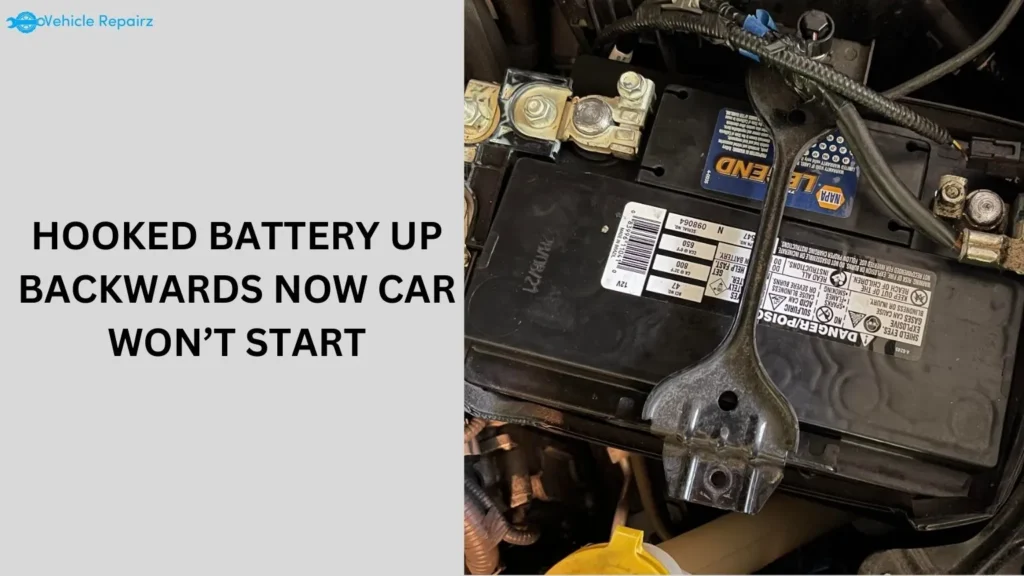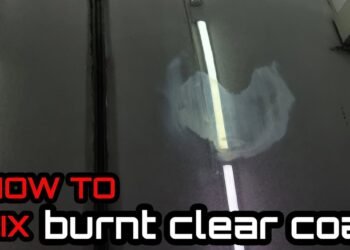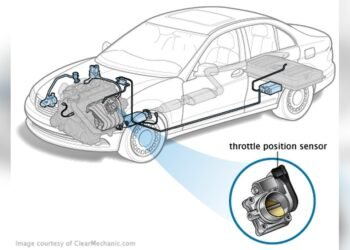Reversing the battery polarity in your car can result in electrical system damage, preventing the car from starting. It’s crucial to address this issue immediately to avoid further complications.
Reversing the battery connections is a common mistake that can have serious repercussions for your vehicle. It often leads to blown fuses, damaged electronics, and can sometimes cause more severe damage to the car’s electrical components. Starting your car after such an incident can be troubling, as the electrical systems may have short-circuited or suffered other forms of damage.
Before trying to start the vehicle again, it’s essential to disconnect the battery and inspect for any obvious damage. It’s advisable to check the fuses and replace any that are blown. Seeking professional help can prevent further damage to the vehicle. Remember, the key to a quick resolution is swift action and a thorough check of the car’s electrical system.
Introduction To Reverse Polarity Mishaps
Imagine this: you attempt to jump-start your car. Suddenly, nothing works. The car won’t start. You hooked up the battery backwards, and now you’re facing a reverse polarity situation. This mishap can cause a wave of panic. It’s a common error with potentially serious consequences. Let’s explore what happens in these scenarios.
The Initial Panic: What Just Happened?
When you connect the battery incorrectly, the car’s electrical system gets a shock. This is known as reverse polarity. Everything seems to fail. The car remains silent. You might see smoke or smell burning. It’s a moment of dread for any car owner. Recognize the issue quickly to minimize damage.
Potential Damages From Incorrect Battery Installation
Hooking up a battery backwards can harm many car parts. These include the battery, fuses, wiring, and possibly the alternator. Electronic components are at high risk. Modern cars have computers that can also suffer. It’s crucial to address this mistake promptly to avoid extensive repairs.
- Battery: May become damaged beyond repair.
- Fuses: Designed to blow and protect other components, they’ll need checking.
- Wiring: Can overheat, leading to potential fire hazards.
- Alternator: Might suffer damage that affects car’s power generation.
- Computer Systems: Expensive to replace or repair if impacted.

Credit: www.reddit.com
Symptoms Of A Backwards Battery Connection
Accidentally hooking up a battery backwards in a car is a serious mistake. It can lead to many problems. Let’s look at the symptoms of a backwards battery connection.
Car Won’t Start: Is It The Battery?
One key sign of a reversed battery connection is the car not starting. This happens because the electrical system gets confused. It does not receive power the right way. Check these points:
- Battery terminals – Are they connected right?
- Ignition – Does it make any noise or stay silent?
- Lights – Do dashboard lights flicker or stay off?
Electrical Anomalies You Might Notice
Other odd things can happen with a backwards battery. These are signs too.
- Fuses blow out – This protects your car’s electrical parts.
- Odd smells – Burning smells mean wires are getting damaged.
- Smoke – Seeing smoke is a bad sign. It means parts are burning.
Always check your battery connection first. This might save your car from bigger problems.
Safety First: Before You Begin
Accidentally reversing the battery connections can cause serious issues. Your car may not start, and you could damage electrical systems. Before attempting any fixes, focus on safety. This guide will help you start safely.
Disconnecting The Battery Safely
To prevent further damage or injury, follow these steps:
- Turn off the ignition and all car accessories.
- Locate the battery.
- Remove the negative cable first.
- Next, detach the positive cable.
- Keep cables separate to avoid sparks.
- Inspect for damage before reconnecting.
Protective Gear To Wear
Wearing the right gear is crucial:
| Gear | Reason |
|---|---|
| Gloves | Protect hands from acid and sparks |
| Goggles | Shield eyes from potential hazards |
| Long sleeves | Cover skin against corrosive materials |
Always wear gloves and goggles when working with car batteries. Long sleeves offer additional protection. Be sure to work in a well-ventilated area.
Identifying The Cause: Diagnosing Backward Connection
Accidentally reversing the battery terminals can prevent a car from starting. This mistake can cause various electrical issues. It is crucial to diagnose the problem correctly. Here’s how to identify if a backward battery connection is the cause.
Visual Inspection Of Battery Terminals
Start with a visual check of the battery. Look for any signs of damage. Ensure the positive terminal connects to the positive cable. The same goes for the negative side. Incorrect connections will be apparent. The cables may also show signs of melting or discoloration. This is a clear indicator of reverse polarity.
Using A Multimeter To Confirm The Issue
Next, use a multimeter to test the battery. Set the multimeter to measure voltage. Touch the red probe to the positive terminal and the black to the negative. A negative reading suggests reversed connections. A multimeter can also check for blown fuses. These steps are essential for a correct diagnosis.
Follow these methods to find out if backward battery connections are the issue. Remember to always disconnect the battery before attempting any repairs.
Immediate Actions To Take
Accidentally hooking up your car battery backwards can cause a big scare. Your car won’t start, and you might hear nothing when you turn the key. Don’t worry, though. Here are some immediate actions you can take to fix the issue.
Correcting The Battery Terminals
First, ensure your car is off. This is very important for safety. Next, wear safety gloves and goggles to protect yourself. Now, carefully disconnect the battery cables. Start with the negative cable (usually black), then the positive cable (usually red). After that, connect them correctly: positive to positive (+ to +) and negative to negative (- to -). Make sure the connections are tight and secure.
Resetting The Vehicle’s Electrical System
After hooking the battery up correctly, you might need to reset your car’s electrical system. Here’s a simple way to do it:
- With the battery correctly connected, turn on the ignition.
- Wait for a few seconds, then turn it off.
- Remove the key from the ignition.
- Wait for about one minute.
- Start your car as you normally would.
This process can help clear any errors in the system. Your car should start if the issue was just with the battery connection. If your car still won’t start, it might need a professional look. Some cars have fuses that can blow if the battery is connected backwards. These fuses protect the car’s electrical system. A mechanic can check and replace these fuses if needed.

Credit: www.youtube.com
Assessing The Damage
When a battery gets hooked up backwards in a car, it can cause a no-start situation. Before attempting to restart the engine, it’s crucial to assess the damage to prevent further issues.
Checking For Blown Fuses
Fuses act as the car’s protective shields. Incorrect battery connections can blow them. Here’s how to check:
- Locate the fuse box, often under the hood or dashboard.
- Examine the fuse diagram on the box lid.
- Look for broken metal strips in the fuses.
- Replace any blown fuse with the correct amperage.
Note: A multimeter can test for continuity in fuses.
Inspecting For Electronic Component Damage
Electronic components are sensitive to reverse polarity. To inspect:
- Check the dashboard for error lights.
- Listen for unusual noises when turning the key.
- Look for smells of burnt wiring.
- Inspect the alternator and ECU for visible damage.
Professional help is best if damage is found.
Starting The Repair Process
Accidentally hooking up your car battery backwards can be a scary ordeal, but don’t panic. The repair process begins with a systematic approach to identify and fix the problem. Your car’s electrical system might have sustained damage, but with careful steps, you can get back on the road.
Replacing Damaged Fuses And Components
Check the fuses first. A reverse polarity situation often blows fuses. Locate your car’s fuse box; refer to the owner’s manual if necessary. Inspect each fuse for damage. Look for the metal wire inside the fuse. If broken, replace it.
Identify other damaged components. These may include the alternator, ECU, and other sensitive electronics. Visually inspect for burns or unusual smells. Replace any damaged parts before trying to start your car.
When To Call A Professional Mechanic
If you’re not confident in diagnosing or repairing the damage, it’s time to call a pro. Signs that you need a mechanic include complex electronic issues, a car that still won’t start, or a lack of tools. A professional will have the right equipment and expertise to safely repair your vehicle.

Credit: vehiclerepairz.org
Preventive Measures For The Future
Accidentally hooking up a car battery backwards can cause major issues. Let’s focus on steps to avoid this problem in the future.
Color Coding Battery Terminals
Always check the battery terminals before you connect them. Car batteries have color-coded terminals for a reason. Red typically marks the positive terminal, while black indicates the negative one.
- Match red to red and black to black.
- Look for the plus (+) sign for positive.
- The minus (-) sign shows the negative terminal.
This simple step can save your car from electrical damage.
Educating Yourself On Car Battery Maintenance
Understanding basic car battery maintenance is key. It helps prevent mistakes and extends your battery life.
- Read the car’s manual for specific instructions.
- Watch tutorials from trusted sources.
- Learn to identify worn-out batteries.
Regular checks can alert you to potential issues early.
Frequently Asked Questions
Can Reversing Battery Cables Damage My Car?
Reversing battery cables can cause electrical damage to your car’s components, including fuses, relays, and the ECU.
What Happens If You Hook Up Car Battery Wrong?
Incorrectly connecting a car battery can lead to a sudden electrical surge, potentially damaging electronic systems and causing a no-start condition.
How To Fix A Car That Won’t Start Due To Battery Reversal?
Check and replace blown fuses, reset electronics, and ensure the battery is correctly installed before attempting to restart your car.
Will Insurance Cover Damage From Incorrect Battery Installation?
Some comprehensive insurance policies may cover electrical damage from improper battery installation; check your individual policy for specifics.
Is It Safe To Try Starting A Car After Battery Mishap?
Attempting to start a car after a battery reversal can be unsafe; inspect for damage and consult a professional before starting the engine.
Conclusion
Accidentally connecting your battery in reverse can be a stressful mishap, but it’s not the end of the road. Remember, proper steps can often solve this issue, saving your car from permanent damage. Always consult a professional mechanic for a thorough check-up.
This precaution ensures your vehicle returns to its optimal condition, ready for more journeys ahead. Stay informed, stay safe.
















